P. Marlin October 2022
This post is part of Italy Itinerary 2022. Photos by the Marlin family.
The Sicily road trip begins. Laden with our favorite Sicilian pastries, we checked out of Palermo's Best Western hotel and headed west. The nearly hour drive to Segesta provided our first glimpse of Sicily's rugged terrain. Once we left Palermo, driving into Sicily's countryside was fairly easy as the highways are well maintained. One should caution, however, that Google maps was not always aware of which Sicily roads were impassible. For example, sometimes roads were in bad condition, remote, or, in very small towns, to narrow to navigate even by a small car.
Prior to our drive to the Segesta Archeological Park, online research indicated that there was some confusion as to where to park a car. We opted for parking at the entrance and taking the shuttle to the temple site. This worked out well. The Segesta site is quite exposed (and hot in summer!), so be prepared with water and sunscreen. We had a long travel day so we decided not to visit the site's theater, some distance from the temple. Before we left, we enjoyed a light lunch at the cafe located next to the temple.
 Waiting for the bus to take us to the temple site.
Waiting for the bus to take us to the temple site.
Located in northwestern Sicily, the temple at Segesta sits on an elevated plain in the middle of a hilly, picturesque landscape. The unfinished temple is awe-inspiring, if only for the fact that it is still standing after Sicily's many invasions. Settled around the 6th century B.C., the city of Segesta (or Egesta) is thought to have been occupied by the Bronze Age Elymians, an ancient tribal people who inhabited the western part of Sicily. Close enough to Sicily's coast to be a significant trading center, Segesta continued as a commerce hub into the 5th century BC and the Hellenistic and Roman time periods.
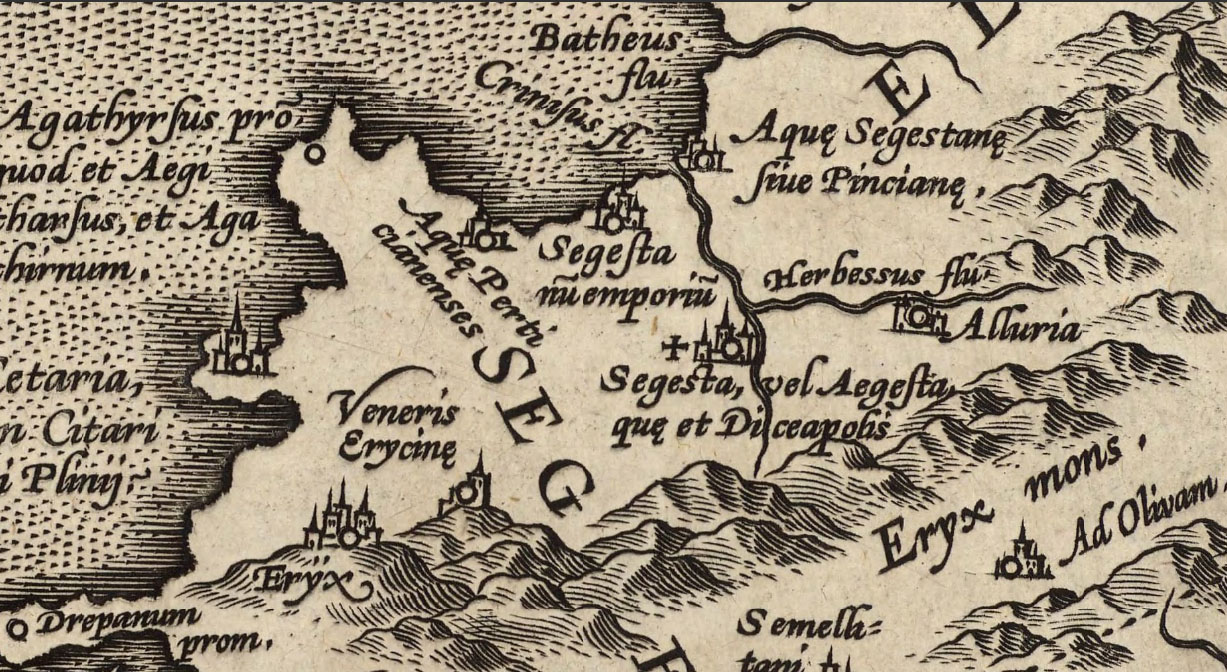 Segesta in the middle of an old Sicily map. Siciliae Veteris Typus
Dave Rumsey Maps (1584)
Segesta in the middle of an old Sicily map. Siciliae Veteris Typus
Dave Rumsey Maps (1584)
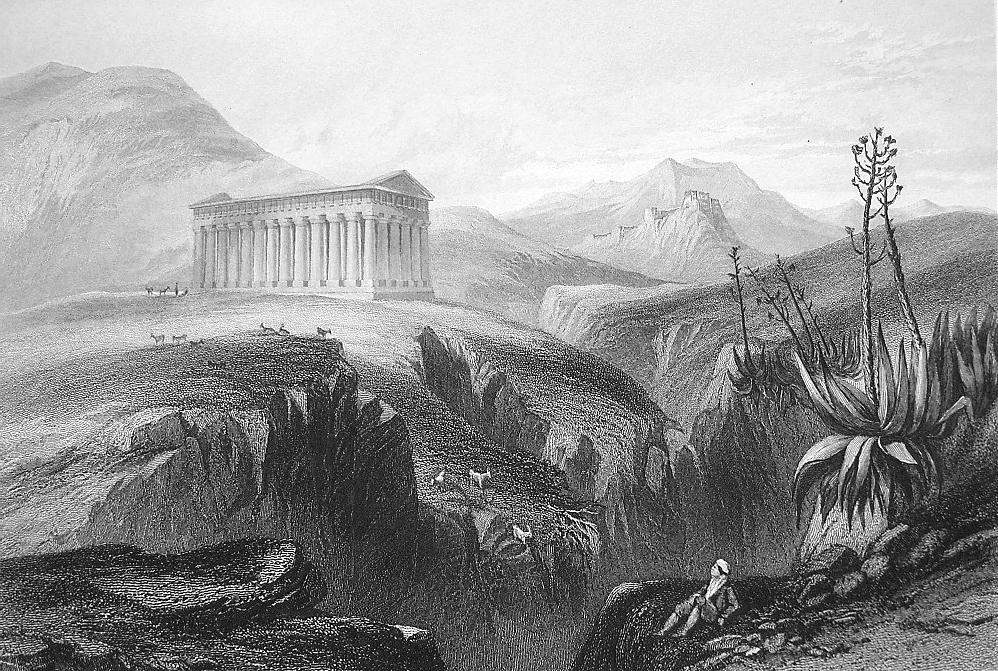 Segesta sketch.
Segesta sketch.
According to Sicily, Three Thousand Years of Human History by Sandra Benjamin, little is known about the Elymi, although the Greeks considered them an ancient people. "The story grew up that the Elymi descended from people of Troy, whom a storm blew off course to Sicily’s western shore. They were supposed to be refugees from the Trojan War, located in time between myth and 1200 B.C. Mentioned by Thucydides, this genealogy would prove of practical importance to Egesta later on. By 700, when substantial numbers of Carthaginians had come to the area, the Elymi were all living inland, which in western Sicily equates with hilly country. They became the allies and trading partners of the uncompromisingly coastal Carthaginians. The Greeks’ settling of Selinus proved crucial for Egesta. The two cities made some attempts at trading, but after Pentathlus and his group endeavored to settle in the area, Egesta turned into an implacable enemy of the Greeks and of Selinus.The Romans liked to consider themselves descendants the ancient Trojans. Egesta — which the Romans called Segesta* — they treated well because of her Elymi origins, in the belief that the Elymi too were of Trojan descent. When the Romans were conquering the area, they either completed the theater that Segesta was building or they built the theater themselves."
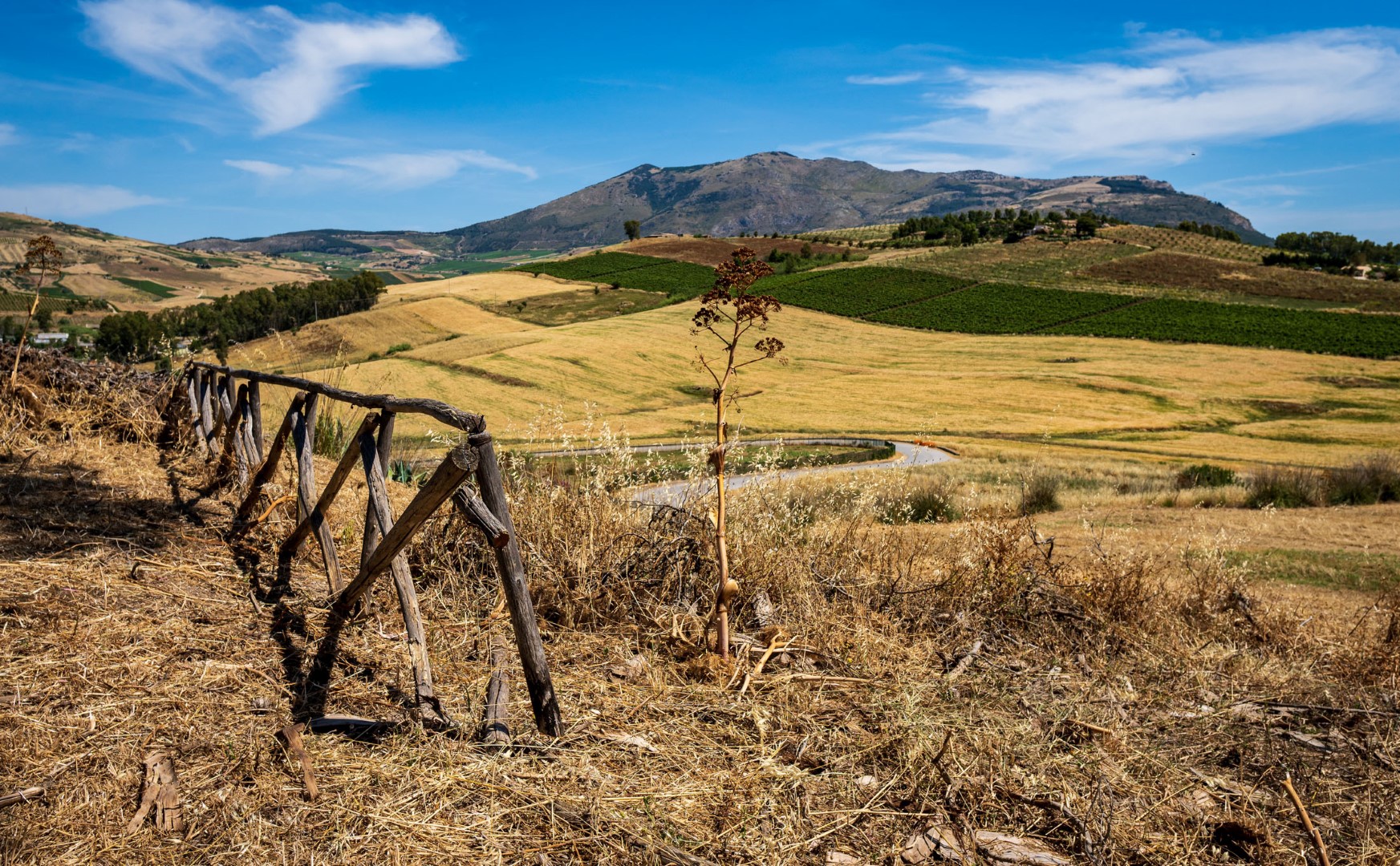 A landscape as colorful as the Sicilian culture.
A landscape as colorful as the Sicilian culture.
 On an old ticket stand at the temple entrance. Notice the "Fascis" located on the front of the concrete
marker in this photo and the photo below.
Both markers are located at the entrance of the temple area. "Fascis" is a bound bundle of wooden rods,
occasionally including an axe with blade emerging. The fasces is an Italian symbol
that had its origin in the Etruscan civilization and was passed on to ancient Rome,
where it symbolized a magistrate's power and jurisdiction.
2
On an old ticket stand at the temple entrance. Notice the "Fascis" located on the front of the concrete
marker in this photo and the photo below.
Both markers are located at the entrance of the temple area. "Fascis" is a bound bundle of wooden rods,
occasionally including an axe with blade emerging. The fasces is an Italian symbol
that had its origin in the Etruscan civilization and was passed on to ancient Rome,
where it symbolized a magistrate's power and jurisdiction.
2
 Notice the "Fascis" located on the front of this concrete
marker as well as the photo above.
Both markers are located at the entrance of the temple area. "Fascis" is a bound bundle of wooden rods,
occasionally including an axe with blade emerging. The fasces is an Italian symbol
that had its origin in the Etruscan civilization and was passed on to ancient Rome,
where it symbolized a magistrate's power and jurisdiction.
2
Notice the "Fascis" located on the front of this concrete
marker as well as the photo above.
Both markers are located at the entrance of the temple area. "Fascis" is a bound bundle of wooden rods,
occasionally including an axe with blade emerging. The fasces is an Italian symbol
that had its origin in the Etruscan civilization and was passed on to ancient Rome,
where it symbolized a magistrate's power and jurisdiction.
2
The temple at Segesta is "the best preserved temple of the most ancient Doric art," said J. Hermann von Riedesel, Baron of Eisenbach, a cultured German traveller who visited Segesta in 1767. Many other Grand Tour travelers, painters, engravers, architects and poets - J.P. Houel, J.-CI. Richard Abbé de Saint Non, J.W. von Goethe, left descriptions and images of the temple of Segesta. This is how the building became part of European culture heritage.
The temple was a Greek-Sicilian peripteral temple of six by fourteen columns. After the raising of the colonnade, the construction remained incomplete, probably due to the occupation of the city by the Carthaginians (409 B.C.) and the war between Selinunte and Segesta (412 B.C.). In the colonnade (Peristasis), the tabs on the steps (Krepidoma) and on the columns, which were usually taken away only during the finishing touches, show the incompletion of the temple. The tabs used for the lifting and putting into place of the ashlars, clearly illustrate (together with other factors) some important characteristics of the building techniques of the classic age. In its general proportions, the synthesis of its parts and in its stylistic characteristics (capitals, borders, curving of horizontal lines) the temple faithfully followed the models of classical architecture of Greek cities in Sicily, especially in the nearby Selinunte.
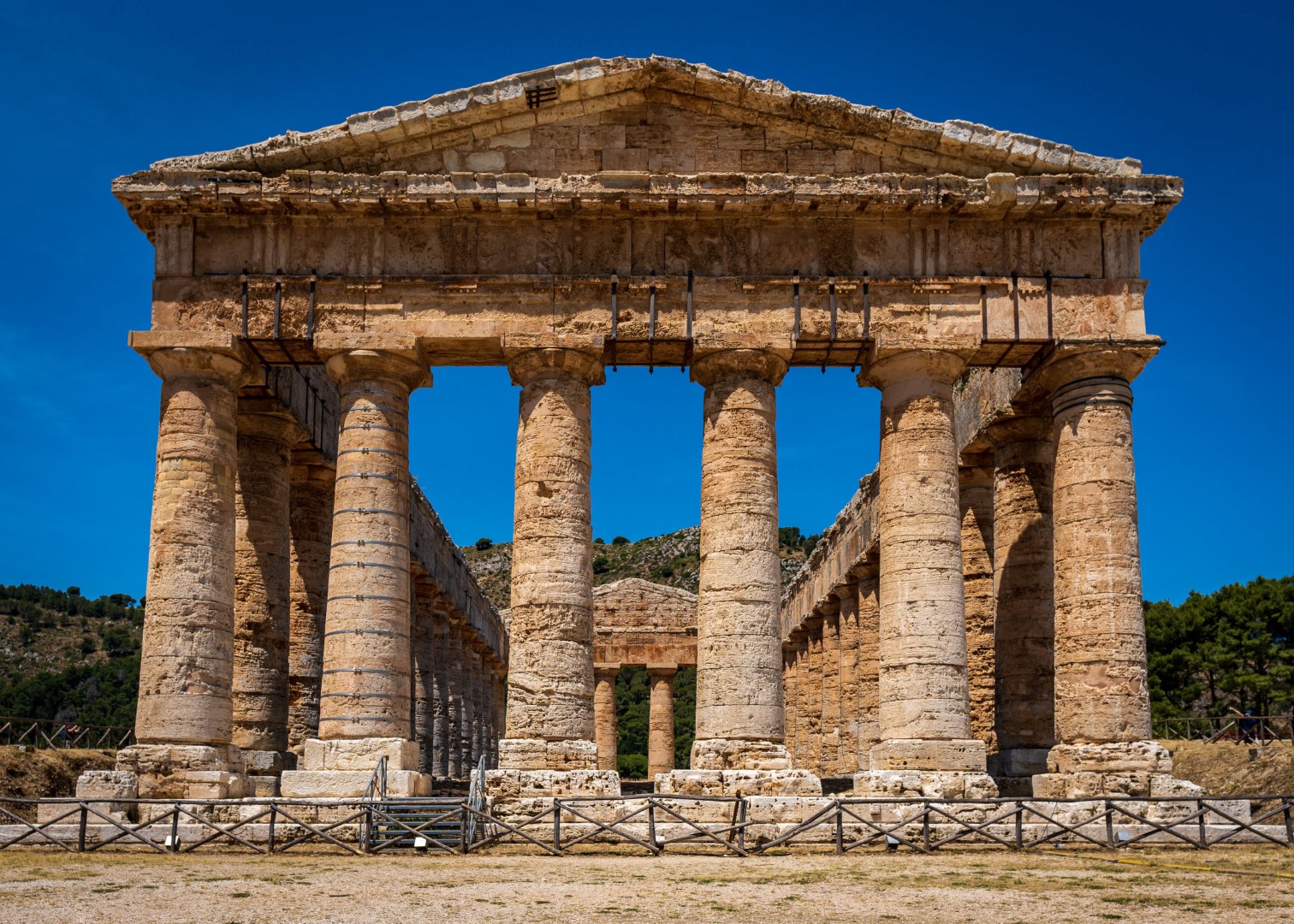 Segesta Archeological Park
Segesta Archeological Park
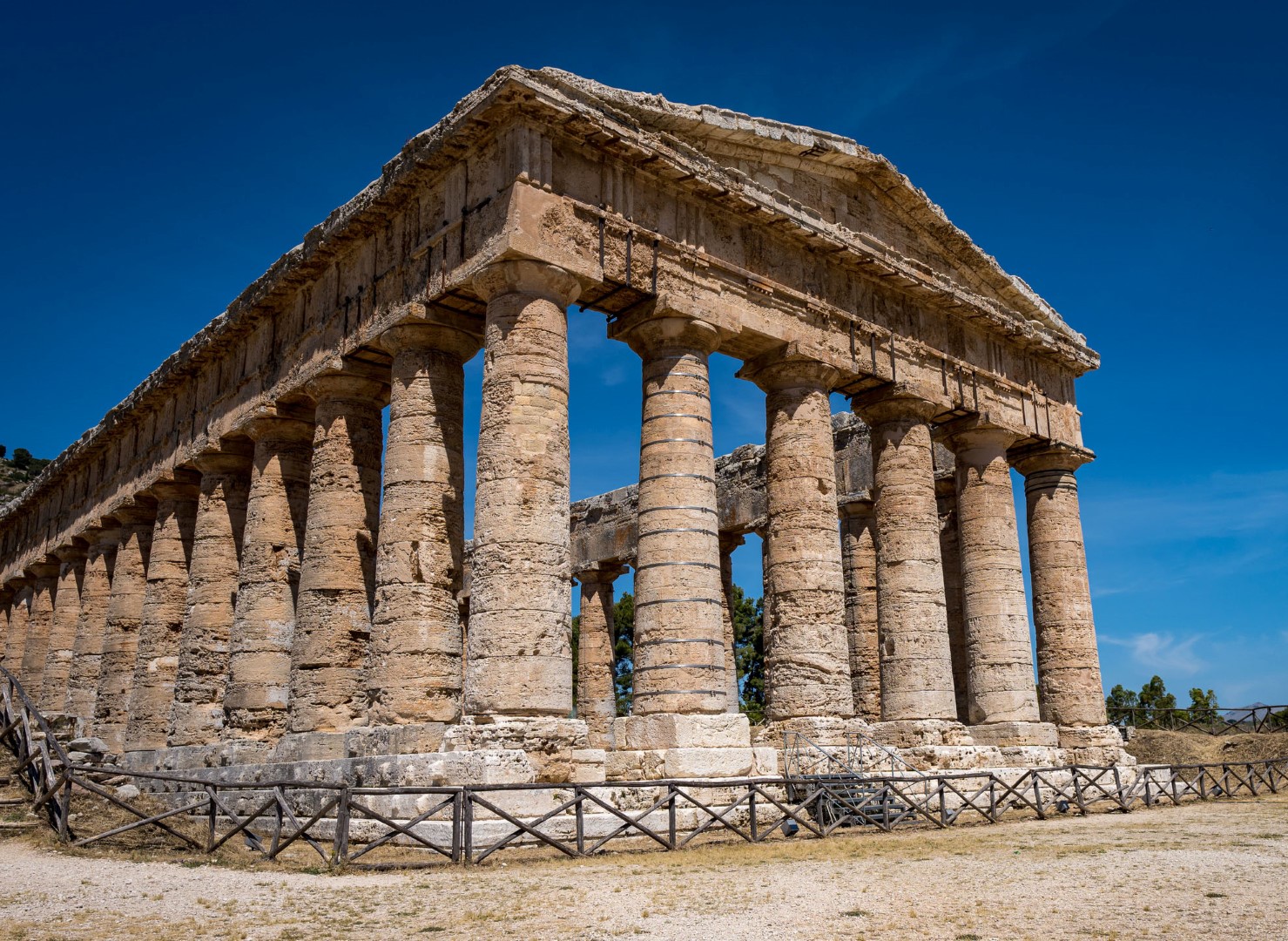 Segesta Archeological Park
Segesta Archeological Park
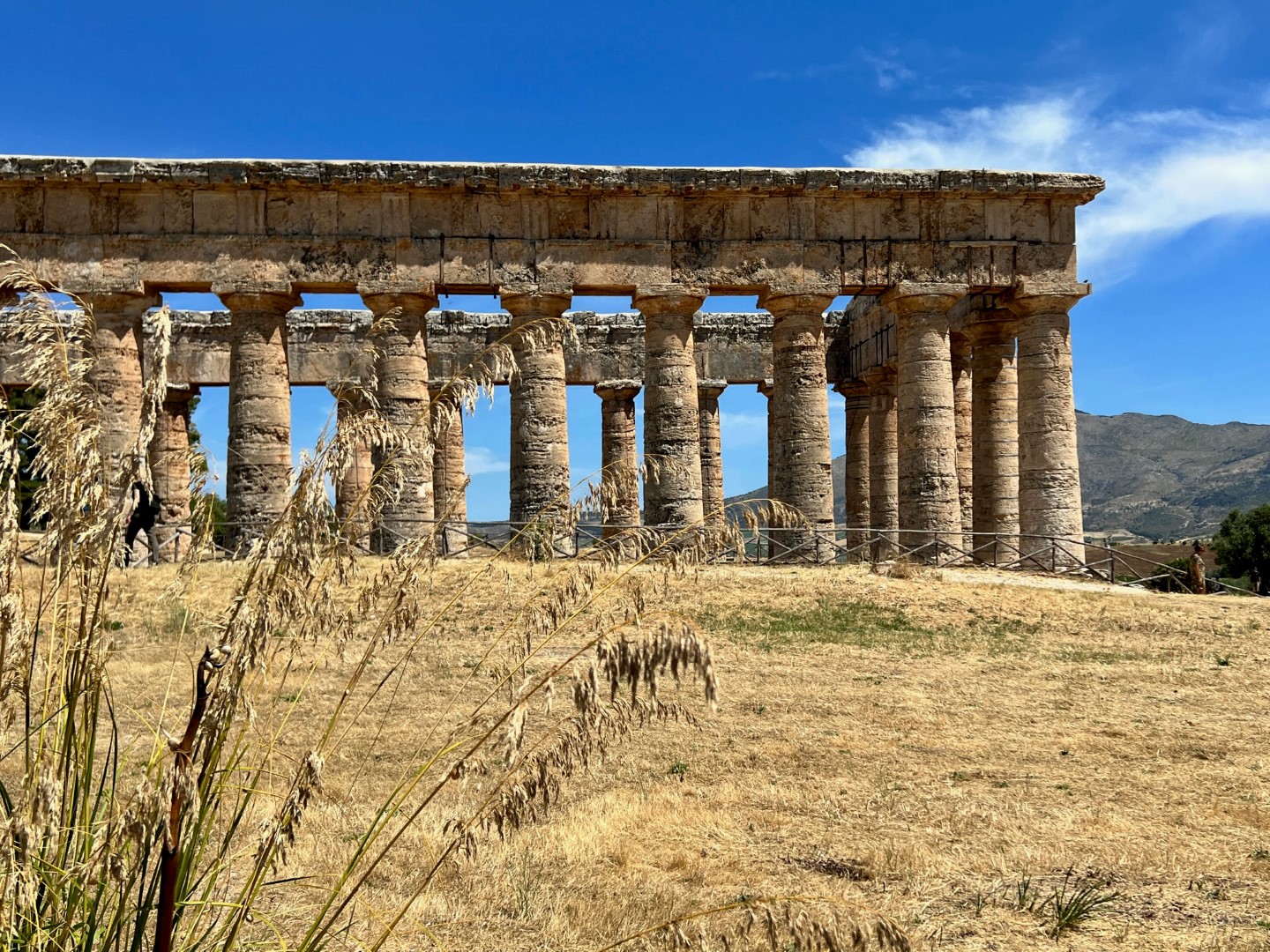 Segesta Archeological Park
Segesta Archeological Park
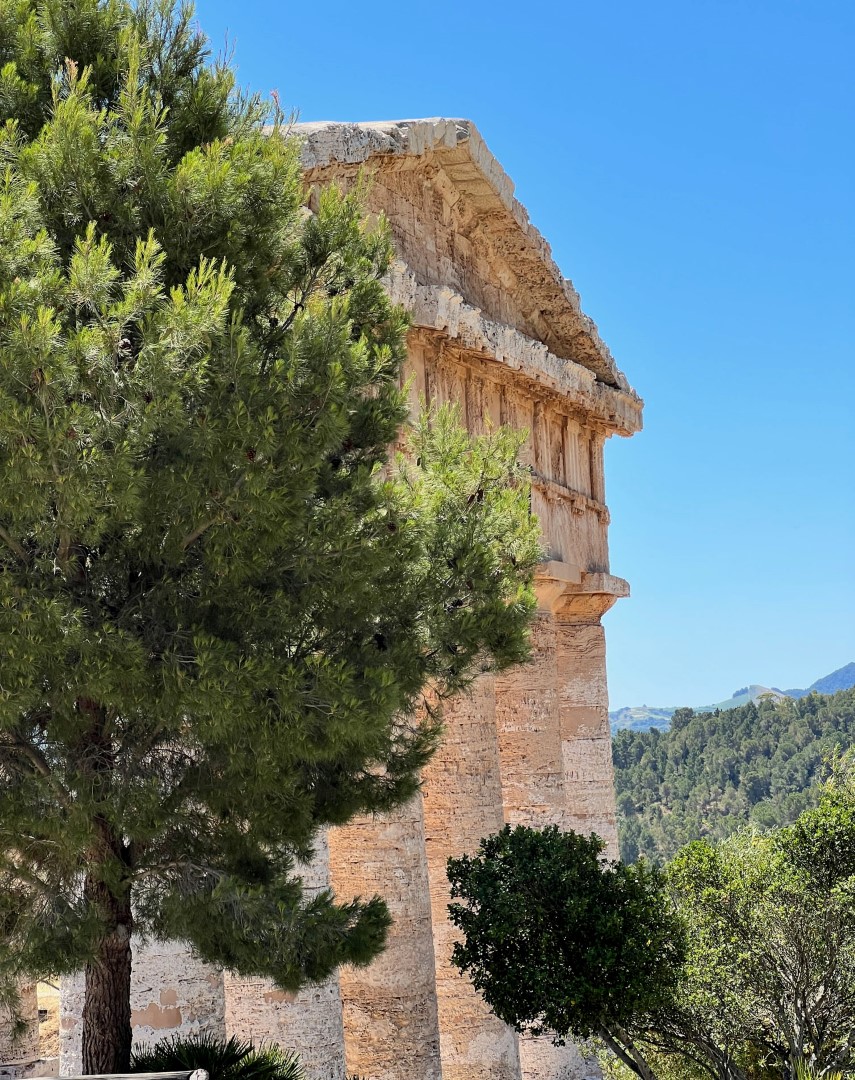 Segesta Archeological Park
Segesta Archeological Park
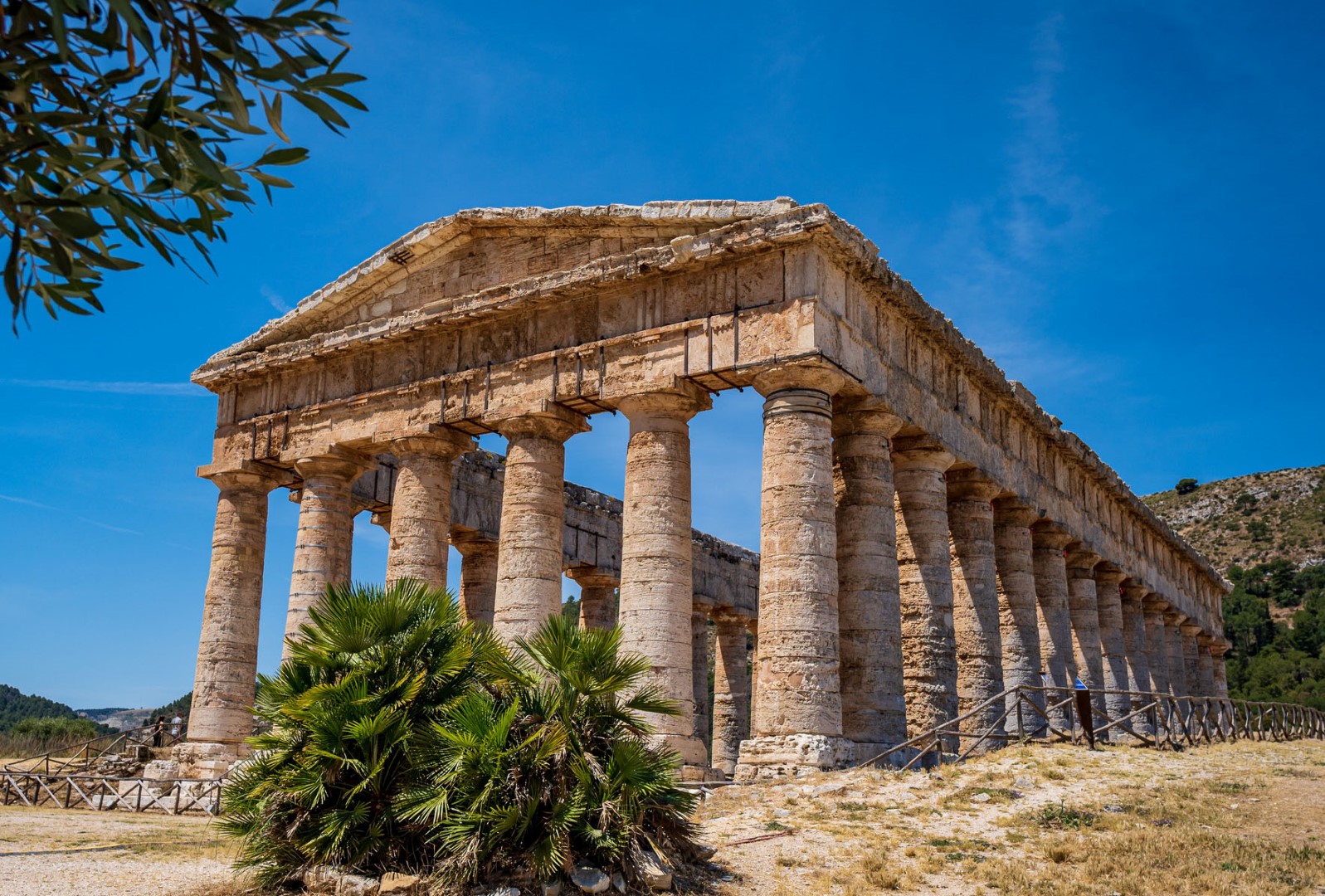 Segesta Archeological Park
Segesta Archeological Park
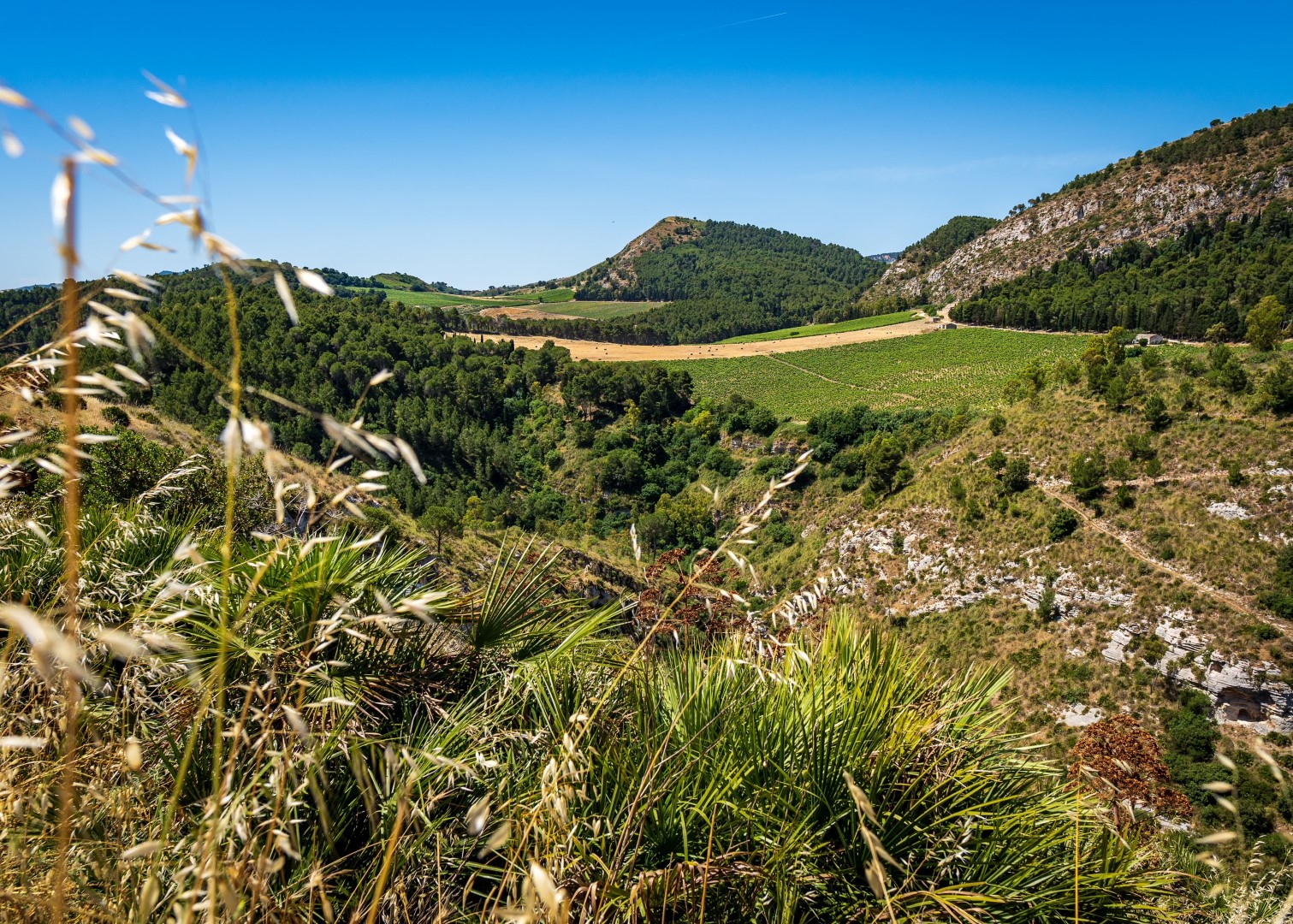 A view of the landscape from the temple.
A view of the landscape from the temple.
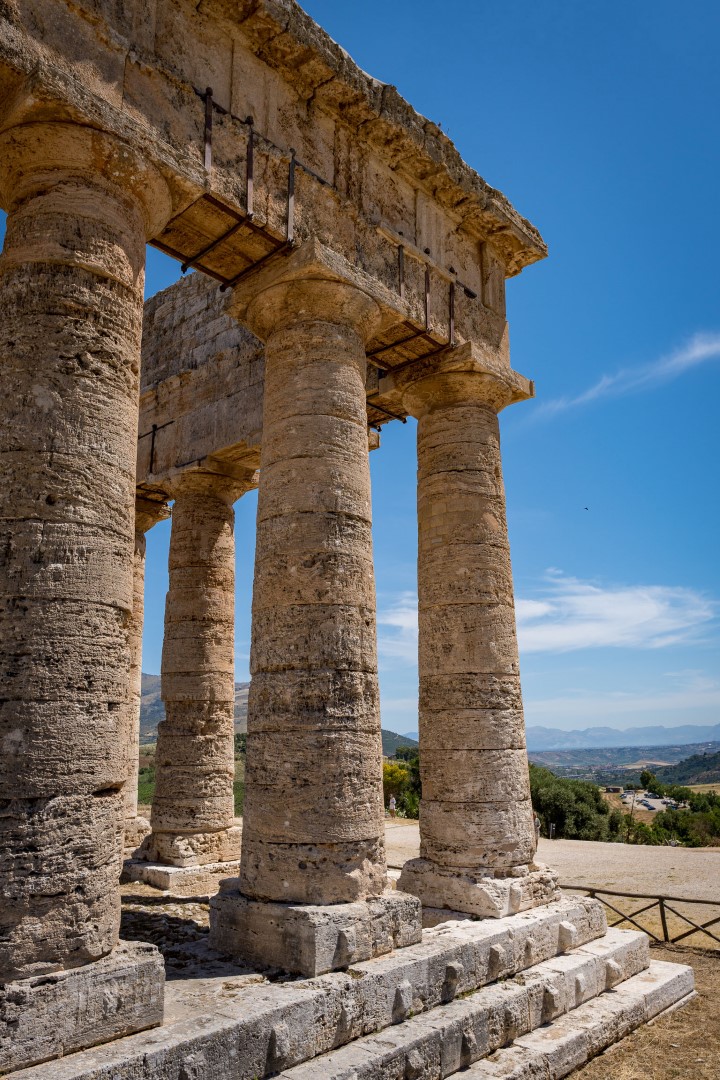 Segesta Archeological Park
Segesta Archeological Park
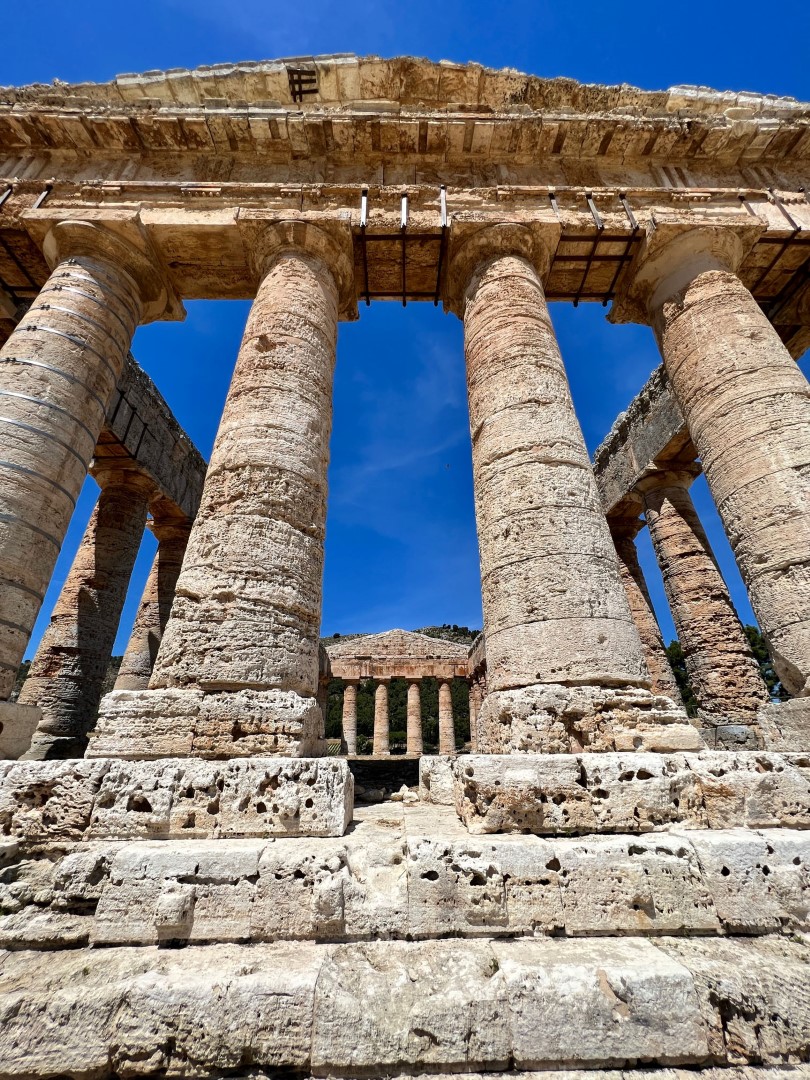 Segesta Archeological Park
Segesta Archeological Park
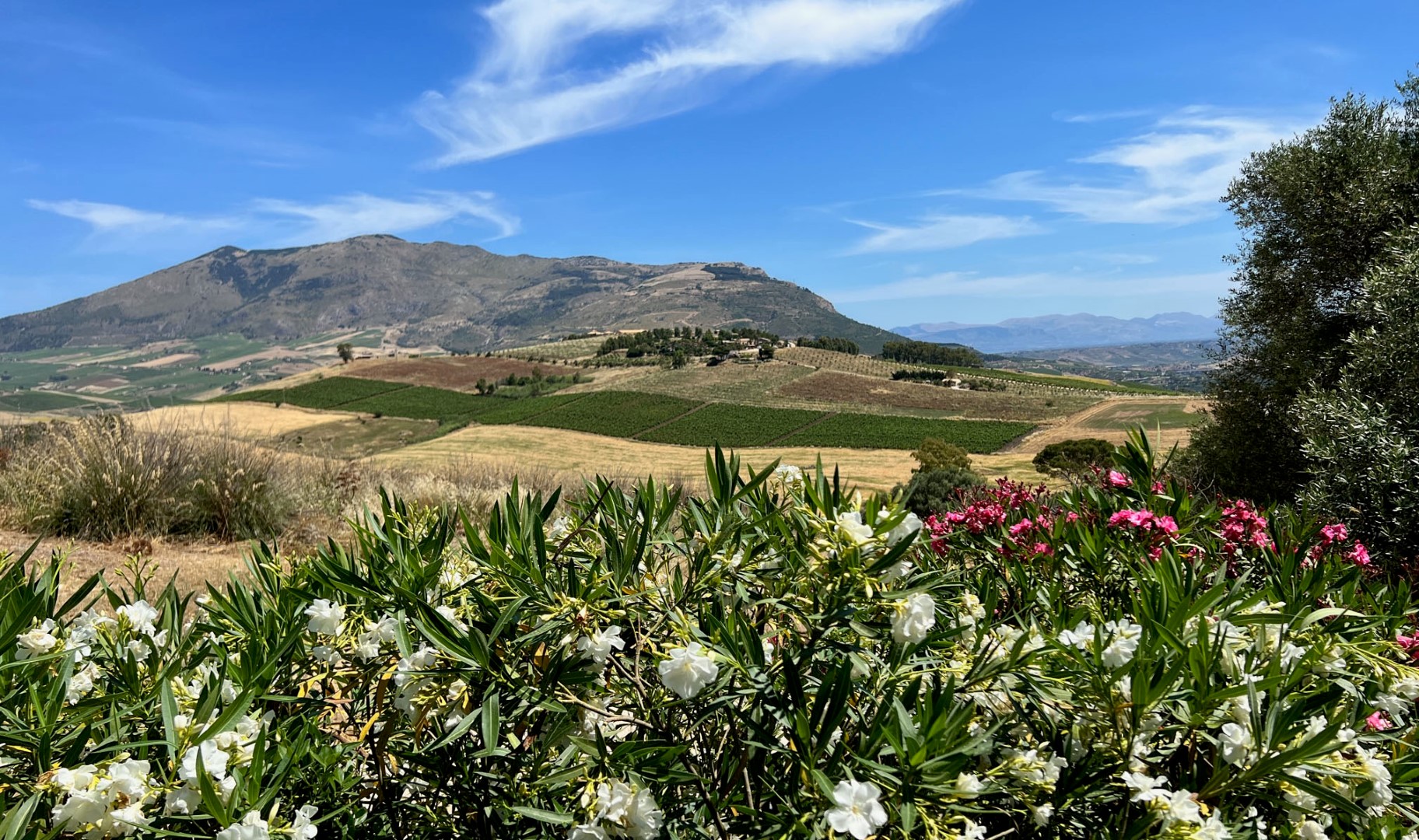 A landscape as colorful as the Sicilian culture.
A landscape as colorful as the Sicilian culture.
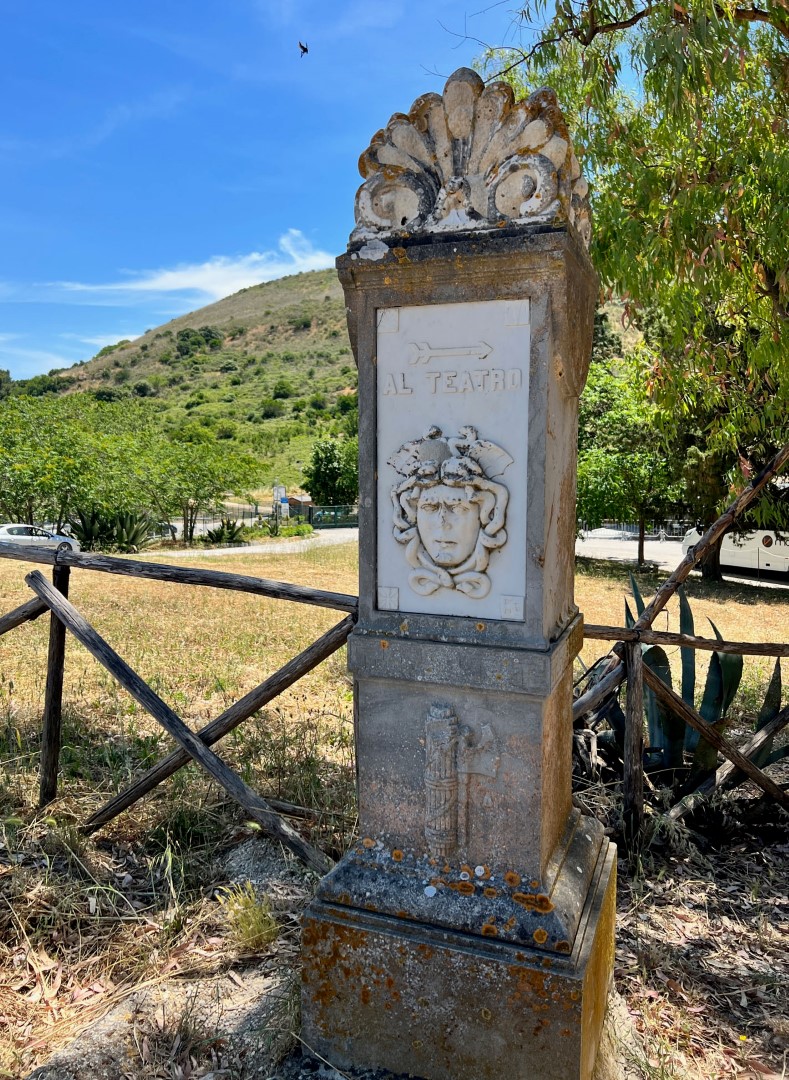 Another concrete structure with Fasces. This one is pointing to the theater.
Another concrete structure with Fasces. This one is pointing to the theater.
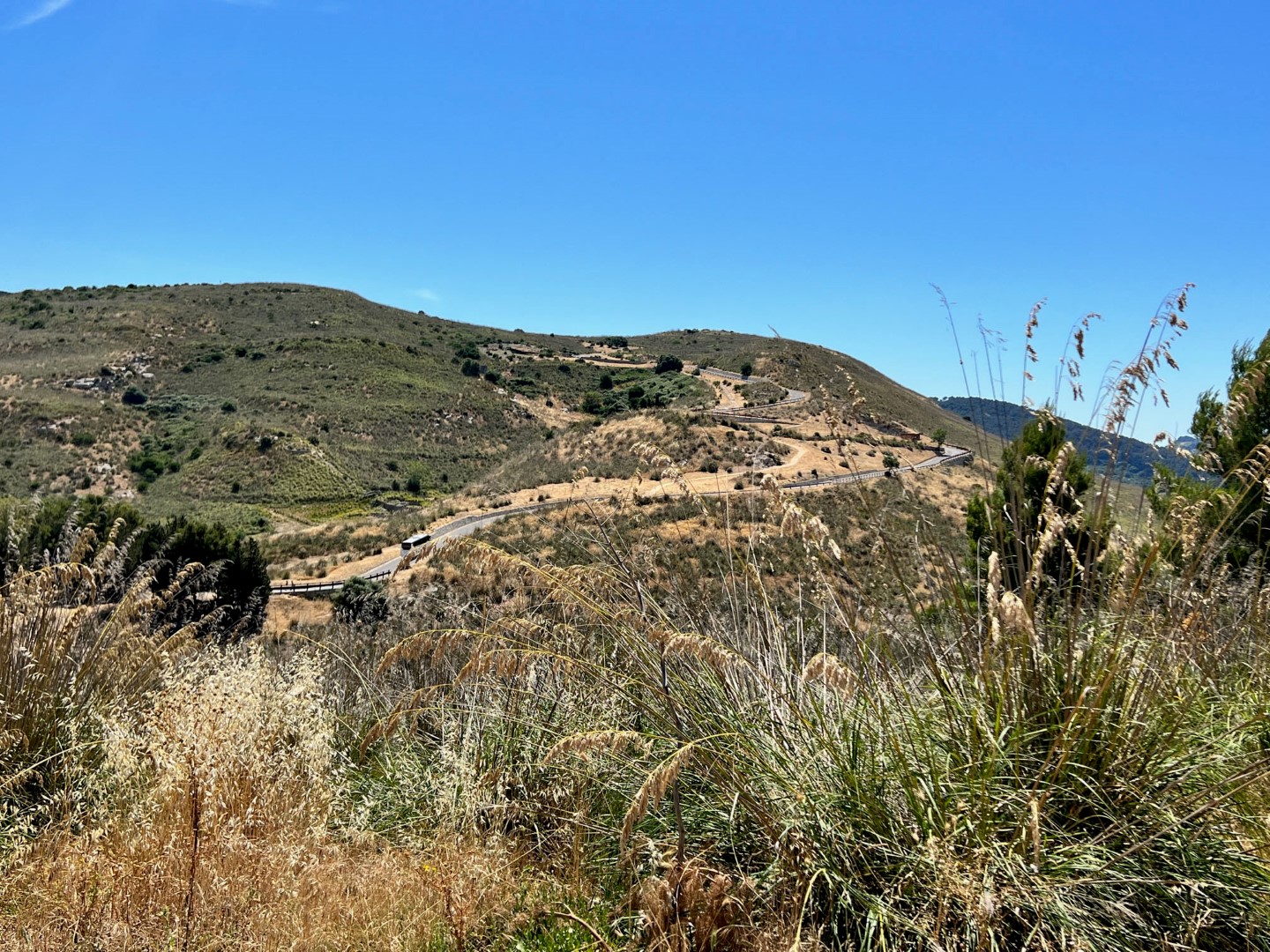 In the distance, the road to the theater.
In the distance, the road to the theater.
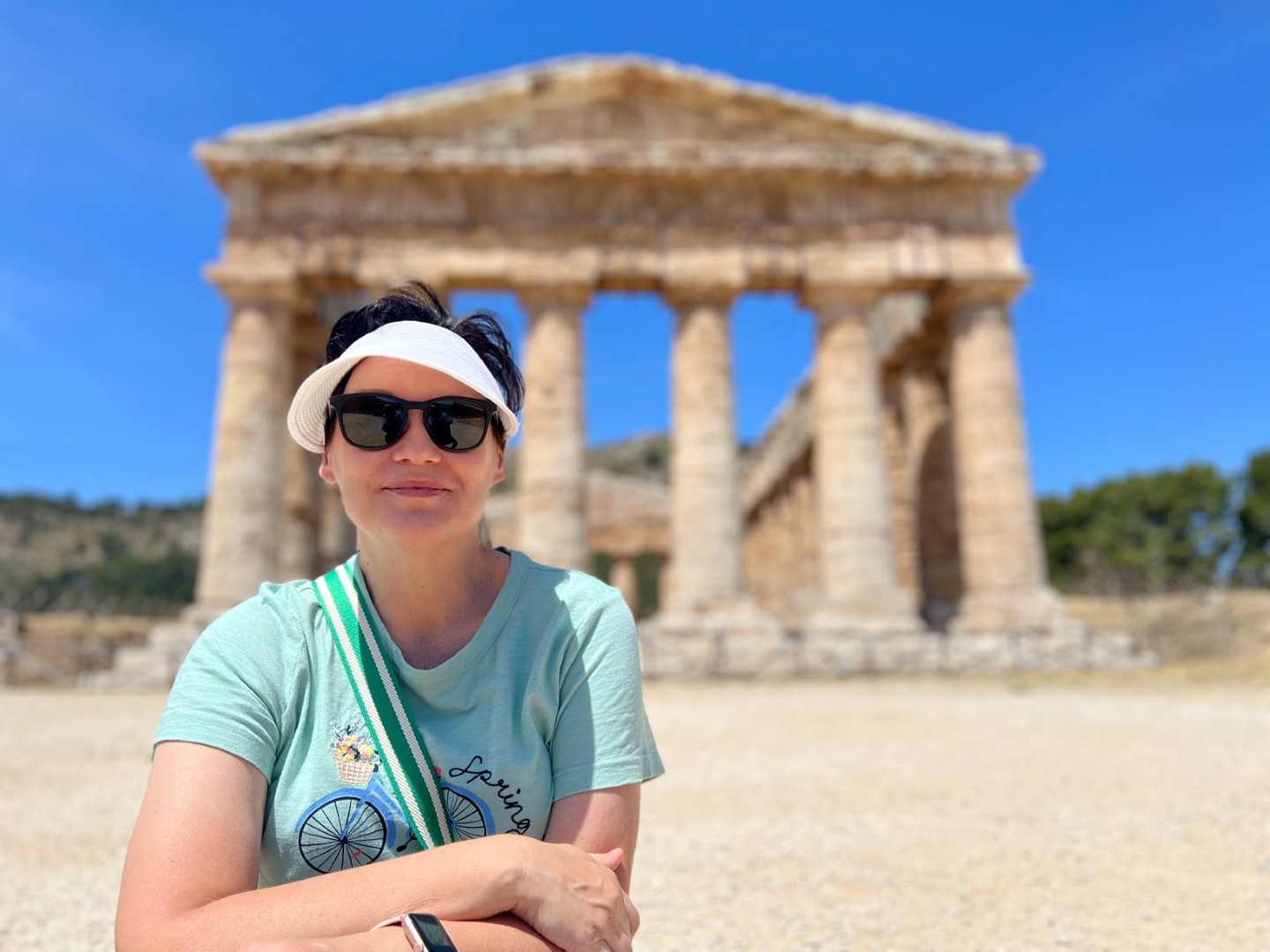 Yours truly (without a trace of Sicilian or Italian ancestry).
Yours truly (without a trace of Sicilian or Italian ancestry).
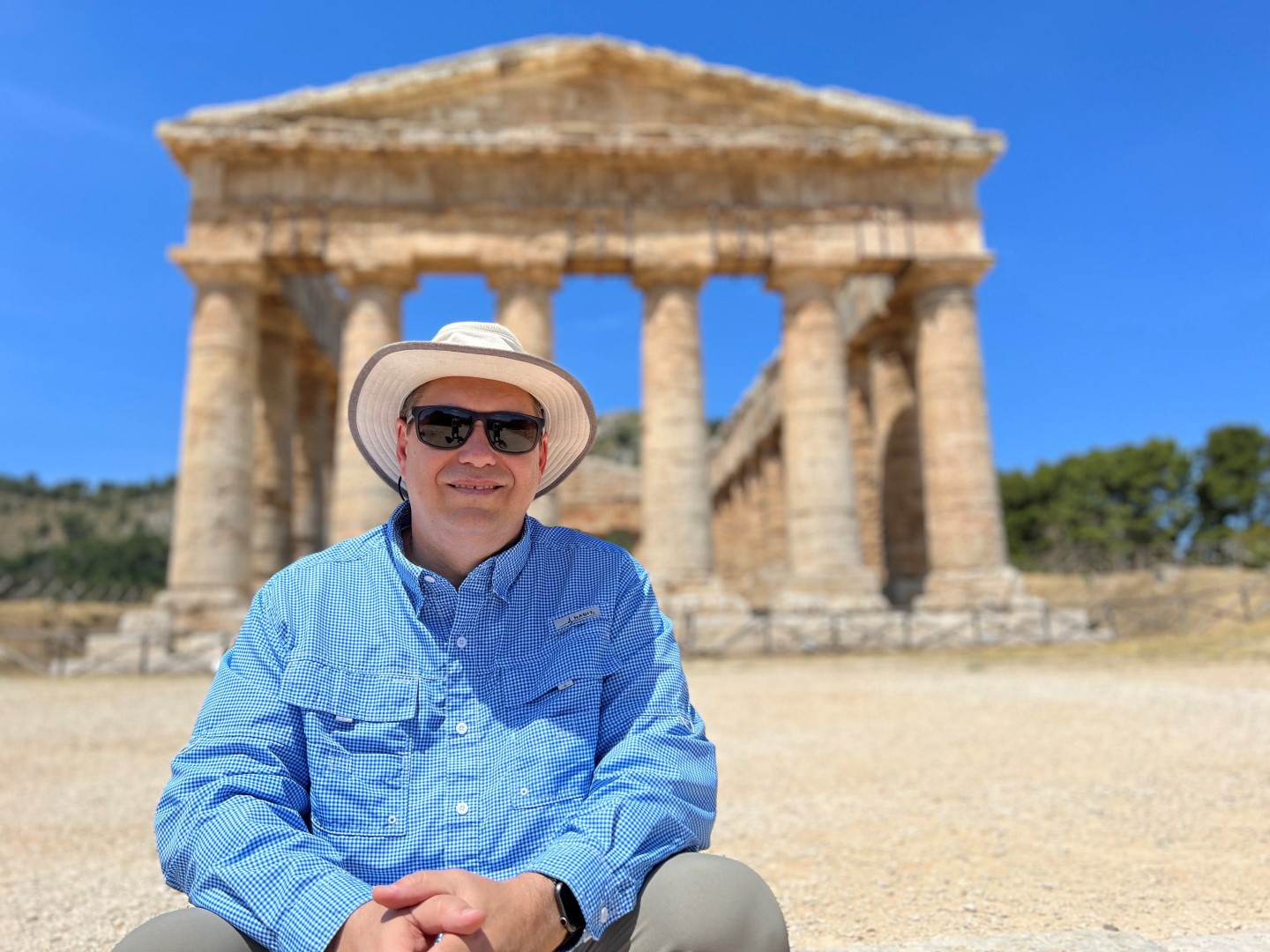 My better half (the one with Sicilian ancestry).
My better half (the one with Sicilian ancestry).